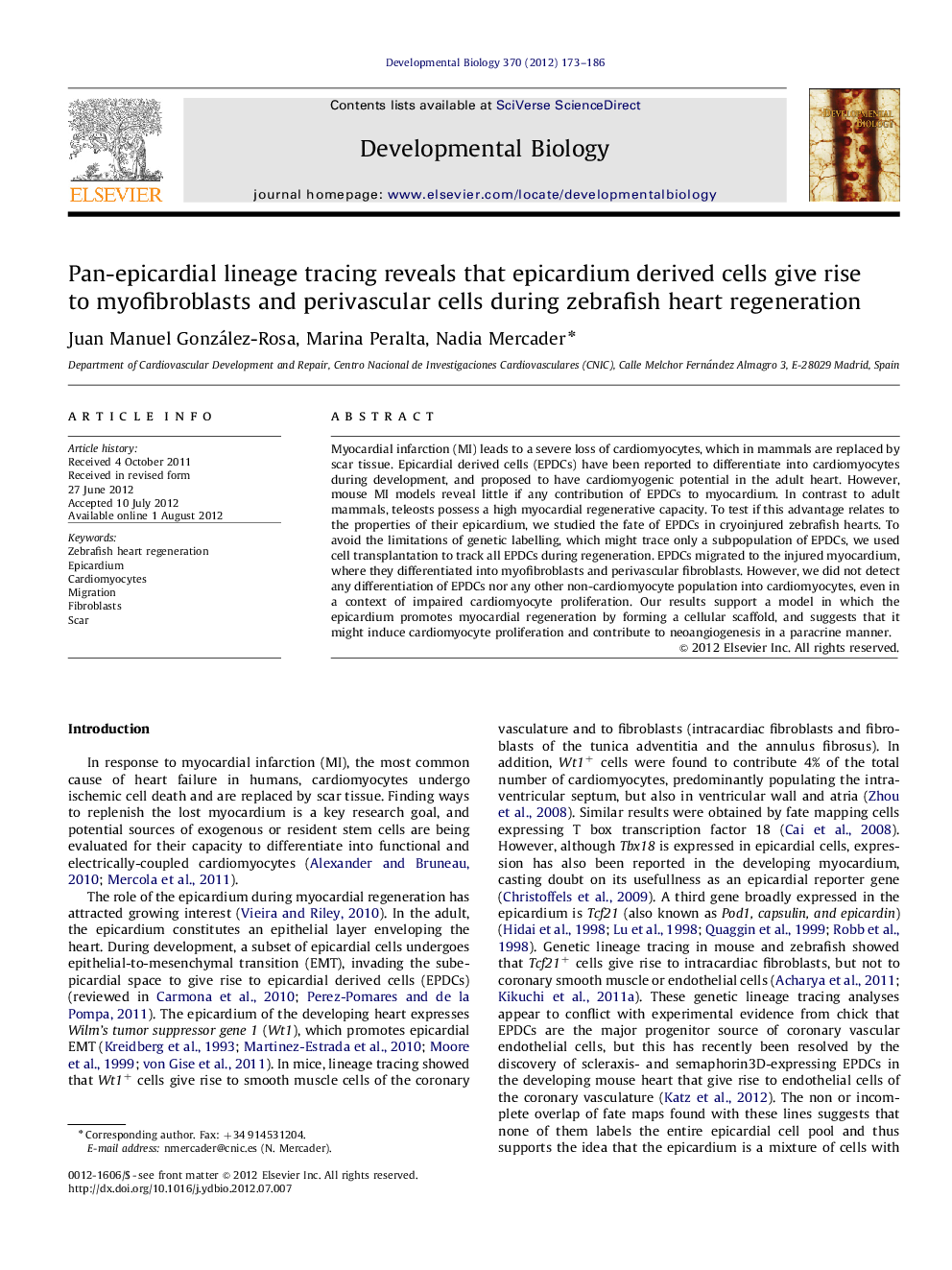| Article ID | Journal | Published Year | Pages | File Type |
|---|---|---|---|---|
| 2173214 | Developmental Biology | 2012 | 14 Pages |
Myocardial infarction (MI) leads to a severe loss of cardiomyocytes, which in mammals are replaced by scar tissue. Epicardial derived cells (EPDCs) have been reported to differentiate into cardiomyocytes during development, and proposed to have cardiomyogenic potential in the adult heart. However, mouse MI models reveal little if any contribution of EPDCs to myocardium. In contrast to adult mammals, teleosts possess a high myocardial regenerative capacity. To test if this advantage relates to the properties of their epicardium, we studied the fate of EPDCs in cryoinjured zebrafish hearts. To avoid the limitations of genetic labelling, which might trace only a subpopulation of EPDCs, we used cell transplantation to track all EPDCs during regeneration. EPDCs migrated to the injured myocardium, where they differentiated into myofibroblasts and perivascular fibroblasts. However, we did not detect any differentiation of EPDCs nor any other non-cardiomyocyte population into cardiomyocytes, even in a context of impaired cardiomyocyte proliferation. Our results support a model in which the epicardium promotes myocardial regeneration by forming a cellular scaffold, and suggests that it might induce cardiomyocyte proliferation and contribute to neoangiogenesis in a paracrine manner.
► Epicardial derived cells (EPDCs) migrate into the myocardium during zebrafish heart regeneration. ► EPDCs give rise to fibroblasts during regeneration. ► Undetectable contribution of EPDCs to newly-formed cardiomyocytes. ► EPDCs express factors promoting myocardial proliferation and neoangiogenesis.
